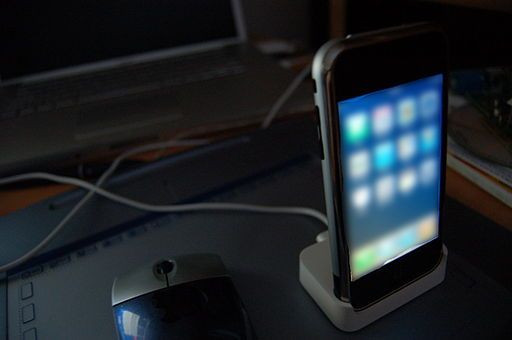How To Use Smartphones And Tablets In Bed Without Disrupting Sleep

Smartphones, tablets, and other mobile devices have become inseparable from the hands of many Americans, even in bed. Recent research suggests that the glow of their light-emitting diode (LED) screens disrupts sleep by suppressing the light-sensitive hormone melatonin, which regulates the natural rhythms of sleeping and waking.
Preliminary research presented by the Mayo Clinic this week at the SLEEP 2013 conference in Baltimore suggests that it's possible to stream one last bit of data from your smartphone or tablet before bed, without disrupting a good night's sleep.
It seems that dimming the brightness setting of the device, or holding it at least a foot away from your face, may be enough to keep the light from interfering with melatonin levels at night.
"In the old days people would go to bed and read a book," said co-author Dr. Lois Krahn, a psychiatrist at the Mayo Clinic in Scottsdale, Ariz. "Well, much more commonly people go to bed and they have their tablet on which they read a book or they read a newspaper or they're looking at material. The problem is it's a lit device, and how problematic is the light source from the mobile device?"
The researchers investigated how levels of light emitted from mobile devices at different distances from a user's face compared to the threshold of light that suppresses the secretion of melatonin, 30 lux.
Measuring Light Emitted From Devices Based on Distance and Brightness Setting
In a dark room, they used a sensitive light meter to measure the light coming from two Apple tablets and a smartphone: an iPad 1, an iPad 3 with retinal display, and an iPhone 4. The emitted light was measured at 0 inches and 14 inches from a user's face.
The measurements showed that when the brightness was lowered to the minimal setting, the LED lights of all three devices were well below the 30 lux melatonin-suppressing threshold.
"We found that only at the highest setting was the light over a conservative threshold that might affect melatonin levels," said Dr. Krahn. "If it's at the mid setting or at a low setting it's bright enough to use."
At the lowest brightness setting, held right up against a user's face, the iPhone 4's backlight measured only 2 lux, the iPad 1 measured 11 lux, and the iPad 3 measured 2 lux. Held 14 inches away from a user's face, all the devices measured between 0 and 3 lux at the lowest brightness setting.
At the brightest setting measured from the same distance from a user's face, the iPhone 4 measured 275 lux, the iPad 1 measured 124 lux, and the iPad 3 measured 248 lux — all far above the melatonin-disrupting limit.
When held 14 inches away at the brightest setting, the iPhone 4 measured 8 lux and the iPad 1 measured 21 lux. The iPad 3, however, measured 32 lux — just above the threshold.
Lower Screen Brightness to Avoid Disrupting Melatonin Levels
The results, which have yet to be published in a peer-reviewed journal, suggest that if you must use your smartphone or tablet before bed, you should either keep the screen brightness at the lowest setting or hold it at least a foot from your face in order to avoid disrupting sleep.
If you have a mobile device with a particularly strong backlight, like the iPad 3, you should do both.
Source: Krahn L, Gordon IA. In Bed With a Mobile Device: Are the Light Levels Necessarily Too Bright For Sleep Initiation? (Abstract). SLEEP. 2013.



























